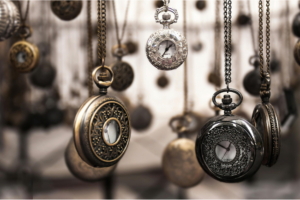MEANING-MAKING with KEEPSAKE PROJECTS
July 22. 2024
Since starting at hospice in September 2023, I have introduced “Keepsake Recordings” as a part of the music therapy programming. Keepsake Recordings involve the patient and I having a recorded conversation that is later given to loved ones of their choosing. Patients always provide me with informed consent before we begin and are always in control of how our time spent together unfolds. The content can vary but in general, the two aspects these recordings include are:
1) The patients’ voice speaking about a topic or topics that they choose.
2) Excerpts of some of their favourite songs that are used to break up and enhance the patients’ spoken story.
Using a small lapel microphone attached to the patient and connected to my iPad, I ask questions about their lives and the moments that brought them the most meaning. Conversations can be quite open-ended and organic (ex: how did you and your wife meet?), while other patients choose to read and record a favourite family recipe, passages from the bible, or a children’s book intended for a grandchild, to name a few examples.
In his book Finding Peace at the End of Life, Henry Fersko-Weiss says that a person’s legacy is the impact they have had – conscious or unconscious – on the people and world around them. The form a keepsake takes is limited only by the imagination and creativity of the people who fashion it. It can center on a single important aspect of a person’s life or a host of things that mattered to them or to their loved ones.
The content might come from:
- identifying the things that were most important to the person
- major life events
- values they held
- key lessons they learned
- their relationship with family and friends
- accomplishments
- involvement in the community
- how the person hopes or hoped to be remembered
The capturing of these becomes the emotional, intellectual, and spiritual inheritance that family and friends receive because that person was part of their life.
The benefits of creating keepsake projects for folks at the end of life are significant – it can give them a sense of purpose, allow them to stay connected to who they are at a time when their sense-of-self might be rapidly changing, and the focused activity can even lessen physical symptoms such as pain and anxiety. For the family, it can help them to engage with their loved one in a substantial and positive way, and can open the door for them to offer and accept words of forgiveness, thanks, and love. These positive outcomes for the family tend to continue into the bereavement experience after the person dies.
Keepsake/legacy work does not have to start before a person dies but can also be something family and friends partake in any time after the person’s death. It can become a way for grieving family members to engage with their loved one’s life and can act as a continued reminder of the role that person played in their lives.
While the keepsake projects I create at hospice with patients involve audio recording, ideas for other projects may include:
- Creating a recipe book of the person’s favourite meals that can be shared and added to by friends and family
- Creating a playlist of the person’s favourite songs, or songs that held meaning for them
- Collecting anecdotes from friends and family about the person and creating a small book of stories
- Creating a painting together
- Writing letters to your loved ones before you die
- Creating a legacy scroll that can include photos, quotes, stories, drawings to be displayed or kept for special occasions.
- Making a legacy quilt from materials important to the person (favourite sweater, baby blanket, t-shirts)
- Having a personalized bird feeder or bench in a location important to your loved one
- Creating a video recording of your loved one.
These are just a few ideas of the infinite number of ways we can remember our loved ones. How would your loved ones want to be remembered? In what way would you choose to pass your legacy on to your loved ones? It is never too soon to start thinking about these things, and in contemplating what we want our legacy to be when we leave this world, we shape how we want to live today.
Thank you for reading,
Sarah
References
Fersko-Weiss, H. (2020). Finding Peace at the End of Life: A Death Doula’s Guide for Families and Caregivers.

